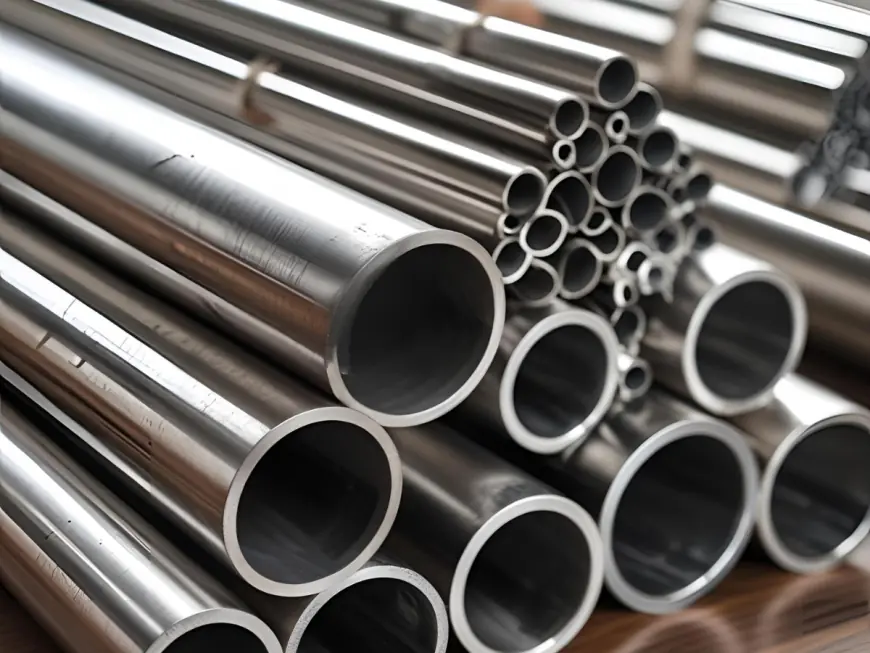Stainless Steel 304L Pipe: A Reliable Choice for Modern Industries
Understand Stainless Steel 304L Pipe, its properties, advantages, and uses. Learn why industries prefer this low-carbon stainless steel for durability and corrosion resistance

In today’s fast-paced industrial world, companies demand materials that combine strength, resistance, and affordability. Among the many stainless steel options available, Stainless Steel 304L Pipe is one of the most reliable and versatile. Known for its low carbon content, this grade is particularly suited for welding-intensive applications, where preventing carbide precipitation is essential.
Because of its adaptability, Stainless Steel 304L Pipe has become a preferred choice across industries such as oil and gas, pharmaceuticals, construction, food processing, and water treatment. In this article, we will cover everything you need to know about SS 304L pipes, from their composition and features to advantages and real-world applications.
What Makes Stainless Steel 304L Pipe Unique?
The “L” in 304L stands for Low Carbon. While standard 304 stainless steel contains up to 0.08% carbon, 304L reduces this to just 0.03%. This slight difference dramatically improves weldability and minimizes the risk of intergranular corrosion during high-temperature welding.
This unique property means that SS 304L pipes are often used in industries where welding is unavoidable, and long-term durability is essential. Unlike higher-carbon grades, 304L pipes do not require post-weld annealing, saving both time and cost during fabrication.
Chemical Composition of Stainless Steel 304L Pipe
The chemical makeup of 304L stainless steel gives it its distinctive balance of corrosion resistance and strength:
-
Chromium (18.0 – 20.0%) → Improves oxidation and rust resistance.
-
Nickel (8.0 – 12.0%) → Provides toughness and ductility.
-
Carbon (≤0.03%) → Prevents carbide precipitation during welding.
-
Manganese (≤2.0%) → Enhances hot-working properties.
-
Silicon (≤0.75%) → Strengthens oxidation resistance.
-
Phosphorus & Sulfur (≤0.045% each) → Controlled for mechanical stability.
-
Iron (Balance) → Base element of the alloy.
Mechanical Properties of Stainless Steel 304L Pipe
The combination of strength and ductility makes 304L stainless steel pipes reliable across industries:
-
Tensile Strength → 485 MPa (minimum)
-
Yield Strength → 170 MPa (minimum)
-
Elongation → 40% (minimum)
-
Hardness → ≤201 HB
-
Density → 8.0 g/cm³
These properties make Stainless Steel 304L Pipe suitable for both low-temperature cryogenic services and high-temperature environments.
Features of Stainless Steel 304L Pipe
1. Corrosion Resistance
304L stainless steel is highly resistant to rust and chemical damage. It performs well in environments with high humidity, water exposure, and mild chemicals.
2. Weldability
The reduced carbon content ensures smooth welding without post-heat treatment. This lowers fabrication costs and improves efficiency.
3. Heat Resistance
Capable of resisting oxidation up to 870°C intermittently and 925°C continuously, 304L pipes can withstand demanding thermal conditions.
4. Formability
The material is easy to cut, bend, and fabricate into customized pipe systems.
5. Durability
With excellent toughness and strength, 304L pipes have a long lifespan, even under heavy industrial use.
Manufacturing Process of Stainless Steel 304L Pipe
Producing Stainless Steel 304L Pipe involves several controlled steps:
-
Raw Material Selection → High-quality chromium, nickel, and iron are sourced.
-
Melting and Casting → Materials are melted in an electric furnace and cast into billets.
-
Hot Rolling → Billets are heated and rolled into cylindrical shapes.
-
Cold Drawing → Pipes are drawn through dies for accuracy and surface finish.
-
Welding (for welded pipes) → Stainless steel strips are welded longitudinally or spirally.
-
Heat Treatment → Annealing enhances strength and corrosion resistance.
-
Surface Finishing → Processes like polishing and pickling improve performance.
-
Testing → Quality checks include hydrostatic tests, ultrasonic inspections, and pressure tests.
Types of Stainless Steel 304L Pipes
Stainless Steel 304L pipes come in multiple forms to meet industry-specific requirements:
-
Seamless Pipes
-
No welds, superior strength, and uniform structure.
-
Ideal for high-pressure and critical applications.
-
-
Welded Pipes
-
Cost-effective, manufactured by welding stainless steel strips.
-
Common in low-to-medium pressure applications.
-
-
ERW Pipes (Electric Resistance Welded)
-
Manufactured through resistance welding.
-
Widely used in water pipelines and structural applications.
-
-
Fabricated Pipes
-
Custom-made based on client specifications.
-
Advantages of Stainless Steel 304L Pipe
-
Corrosion Resistance → Long life in wet and chemical-rich environments.
-
Cost-Effective → Affordable compared to high-nickel alloys.
-
Weldability → No post-weld annealing required.
-
Versatility → Suitable for different industrial sectors.
-
Strength and Durability → Withstands pressure and heat effectively.
-
Eco-Friendly → Fully recyclable, reducing environmental impact.
Applications of Stainless Steel 304L Pipe
The versatility of SS 304L pipes makes them popular across industries.
Oil and Gas
Used in offshore drilling, pipelines, and refinery equipment where corrosion resistance is essential.
Petrochemical Industry
Handles corrosive liquids and gases without deterioration.
Food and Beverage
304L stainless steel is hygienic and non-reactive, making it ideal for dairy plants, breweries, and food processing units.
Pharmaceuticals
Widely used in sterile environments for transporting liquids and gases.
Construction and Architecture
Applied in structural frameworks, handrails, and decorative piping.
Water Treatment
Used in desalination plants and water purification systems.
Power Generation
Essential for heat exchangers, boilers, and condenser tubing.
Automotive and Aerospace
Applied in exhaust systems, hydraulic lines, and aviation fuel systems.
Stainless Steel 304 vs 304L Pipes
While both belong to the same family, the difference lies in carbon content and usage:
-
304 Pipes → Higher carbon, stronger tensile strength, but prone to carbide precipitation.
-
304L Pipes → Low carbon, superior weldability, better corrosion resistance after welding.
Applications requiring strength prefer 304, while welding-intensive projects choose 304L.
Maintenance Guidelines for Stainless Steel 304L Pipe
To extend service life:
-
Clean surfaces with mild detergents to remove dirt and deposits.
-
Avoid direct contact with chloride-heavy environments.
-
Inspect pipes regularly for signs of stress or corrosion.
-
Use correct welding techniques to preserve mechanical integrity.
Why Industries Prefer Stainless Steel 304L Pipe
Companies choose 304L pipes because they provide a balance between performance, cost, and reliability. Their low maintenance needs, combined with long service life, make them a sustainable investment for industrial and commercial use.
Additionally, being 100% recyclable, SS 304L pipes align with global sustainability goals.
Conclusion
Stainless Steel 304L Pipe is one of the most trusted piping solutions available today. Its low carbon content, superior weldability, and excellent corrosion resistance make it suitable for critical industries like oil & gas, food, pharmaceuticals, and construction. Whether handling extreme pressure, high heat, or corrosive environments, SS 304L pipes provide consistent performance and long-lasting durability.
For businesses looking for a cost-effective and versatile piping option, Stainless Steel 304L Pipe is an investment that ensures efficiency, safety, and sustainability.
What's Your Reaction?
 Like
0
Like
0
 Dislike
0
Dislike
0
 Love
0
Love
0
 Funny
0
Funny
0
 Angry
0
Angry
0
 Sad
0
Sad
0
 Wow
0
Wow
0

























































